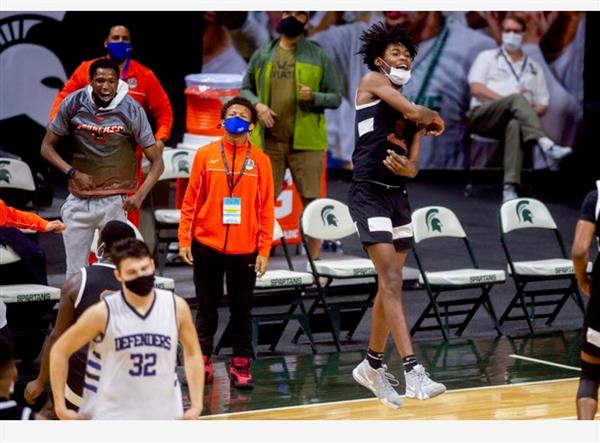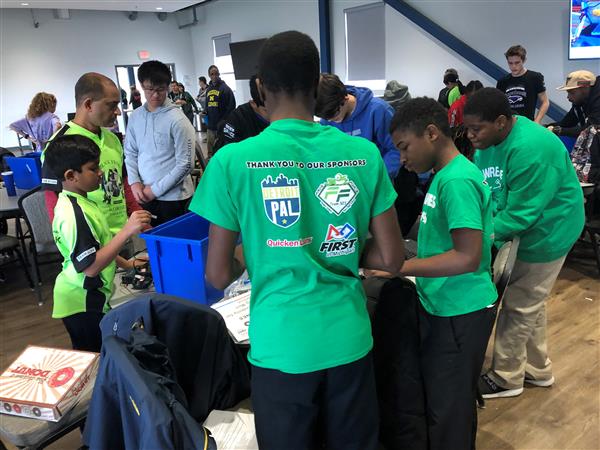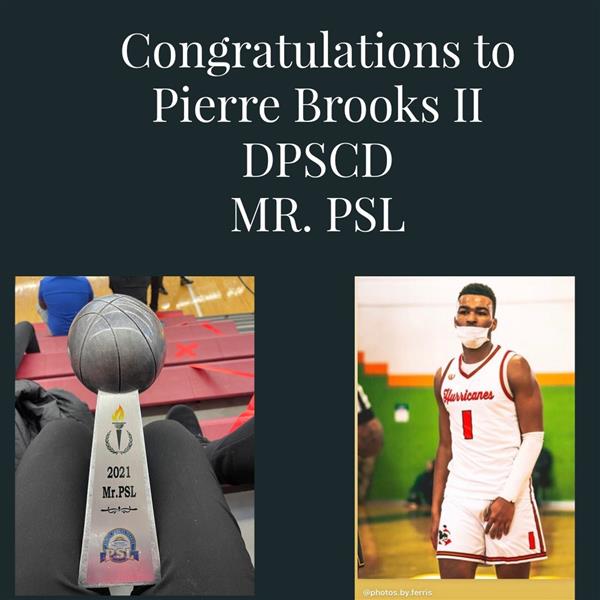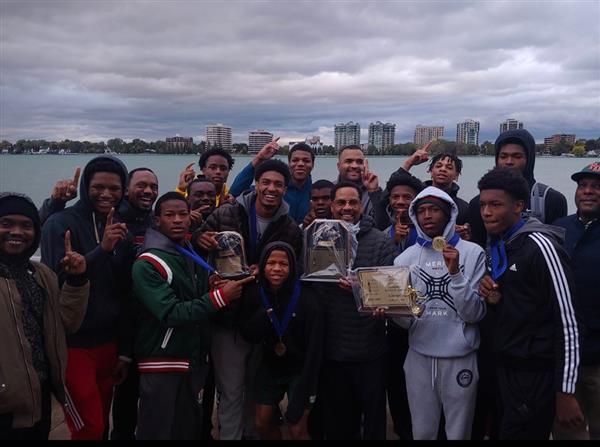- Frederick Douglass Academy for Young Men
- Academics & Electives






























Curriculum
-
We draw upon the expertise of our educators and work together to create models of outstanding achievement in every classroom. By implementing high-quality instructional materials and transforming the academic culture in our schools, we challenge and inspire our students to thrive in the world. With a wide variety of academics and enrichment opportunities aligned with state standards, we support students in unlocking their potential as they extend their skills and talents beyond the classroom. Our core curriculum includes:
- English Language Arts - We are committed to nurturing and developing a strong literacy foundation for all students in the early school years by implementing literacy instructional frameworks that prepare students to become independent readers and writers.
- Math - The mathematics curriculum seeks to ensure mathematical competence and confidence in students in mathematics-rich classroom environments.
- Science - Classroom experiences in science are connected to real-world phenomena and provide opportunities to engage in science and engineering practices through exposure to STEM-related career pathways.
- Social Studies - Students gain the content knowledge, intellectual skills, and core democratic values necessary for fulfilling their civic duties in a participatory democracy and effectively engaging in our global society.
- World Languages - Students develop effective communication in at least one world language other than English as well as cultural competence to help all our students become better-equipped global citizens.
-
ENGLISH
ENGLISH LANGUAGE ARTS I (GRADE 9)
COURSE DESCRIPTION: The ninth grade English Language Arts I course engages students in activities that develop skills in reading, writing, speaking, and listening. Course curriculum is aligned to the Reading Literature, Reading Informational Text, Writing, Speaking and Listening, and Language domains of the Michigan Common Core State Standards for ninth grade. The course specifically builds content around core themes and essential questions that drive classroom instructional routines to facilitate critical thinking, college and career readiness. Students will engage in close reading, collaborative discussions, analysis of text details, analysis of craft and structure, style, tone, and word choice analysis through multiple entries into fiction, non-fiction and informational texts. The course focuses on reading of diverse texts through national and world perspectives, excerpts and full-texts of literature and novel studies. Students will engage in various modes of writing such as narrative, explanatory, informational, argumentative, and non-fiction narrative writing. Student knowledge in grammar, mechanics, and usage will also be reinforced through interaction with literature.
ENGLISH LANGUAGE ARTS II (GRADE 10), HONORS
COURSE DESCRIPTION: In addition to the English II course, students will be required to explore a more intense and rigorous study of reading, writing, speaking, viewing and listening. Students may engage in deeper novel studies on an accelerated path and experience the traditional tenth grade course through additional literary analysis and heightened performance tasks.
ENGLISH LANGUAGE ARTS III (GRADE 11), HONORS
COURSE DESCRIPTION: In addition to the English III course, students will be required to explore a more intense and rigorous study of reading, writing, speaking, viewing and listening. Students may engage in deeper novel studies on an accelerated path and experience the traditional eleventh grade course through additional literary analysis and heightened performance tasks.
ENGLISH LANGUAGE ARTS IV (GRADE 12), HONORS
COURSE DESCRIPTION: In addition to the English IV course, students will be required to explore a more intense and rigorous study of reading, writing, speaking, viewing and listening. Students may engage in deeper novel studies on an accelerated path and experience the traditional eleventh grade course through additional literary analysis and heightened performance tasks.
AP ENGLISH LITERATURE AND COMPOSITION (GR 11 and 12)
COURSE DESCRIPTION: AP English Language and Composition is typically a twelfth grade English course. The course is highly aligned to the standards and structure of the Michigan Common Core State Standards. The AP English Literature and Composition course aligns to an introductory college-level literary analysis course. The course engages students in the close reading and critical analysis of imaginative literature to deepen their understanding of the ways writers use language to provide both meaning and pleasure. As they read, students consider a work’s structure, style, and themes, as well as its use of figurative language, imagery, symbolism, and tone. Writing assignments include expository, analytical, and argumentative essays that require students to analyze and interpret literary works.
ENGLISH TEST PREP, SAT (GR 11)
COURSE DESCRIPTION: In this one semester course, students engage in preparation to take the SAT exam in the spring. The course includes focus on the SAT English Language Arts domains of reading, writing, speaking and listening, and additional topics in related content areas. Khan Academy’s Official SAT Practice is also integrated into the course framework.
Math
ALGEBRA I
COURSE DESCRIPTION: In Algebra I, students learn representations of functions using graphs, tables, equations, and contexts. The course focuses on solving equations and inequalities using a variety of strategies. Students solve systems of two equations and inequalities with two variables using a variety of strategies. Students analyze representations of arithmetic and geometric sequences, use exponential models to solve problems, and investigate a variety of functions including square root, cube root, absolute value, piecewise-defined, step, and simple inverse functions. The course also includes study of statistical analysis of two-variable data and distributions of one-variable data.
ALGEBRA I, HONORS
COURSE DESCRIPTION: In Algebra I Honors, students learn representations of functions using graphs, tables, equations, and contexts. The course focuses on solving equations and inequalities using a variety of strategies. Students solve systems of two equations and inequalities with two variables using a variety of strategies. Students analyze representations of arithmetic and geometric sequences, use exponential models to solve problems, and investigate a variety of functions including square root, cube root, absolute value, piecewise-defined, step, and simple inverse functions. The course also includes study of statistical analysis of two-variable data and distributions of one-variable data. The course may advance at an accelerated pace.
ALGEBRA II
COURSE DESCRIPTION: In Algebra II, students visualize, express, interpret, describe, and graph functions (and their inverses, in many cases). Students will represent functions with an equation, and vice-versa, and transform graphs, including those from the following function families: absolute value, exponential, linear, logarithmic, piecewise-defined, polynomial, quadratic, square root, and trigonometric. Students will recognize the connections among multiple representations. Students rewrite rational expressions, perform arithmetic operations on polynomials, and study the relationship between zeros and factors of polynomials.
ALGEBRA II
COURSE DESCRIPTION: In Algebra II, students visualize, express, interpret, describe, and graph functions (and their inverses, in many cases). Students will represent functions with an equation, and vice-versa, and transform graphs, including those from the following function families: absolute value, exponential, linear, logarithmic, piecewise-defined, polynomial, quadratic, square root, and trigonometric. Students will recognize the connections among multiple representations. Students rewrite rational expressions, perform arithmetic operations on polynomials, and study the relationship between zeros and factors of polynomials.
GEOMETRY
COURSE DESCRIPTION: In this course, students study geometric transformations (reflection, rotation, translation, dilation) and symmetry. Students explore relationships between figures (such as similarity and congruence) in terms of rigid motions and similarity transformations. Proofs of geometric theorems, using coordinates to prove geometric theorems, and modeling with geometry are also studied in detail. Students also study tools for analyzing and measuring right triangles, general triangles, and complex shapes. This study includes the Pythagorean Theorem, trigonometric ratios, the Law of Sines, and the Law of Cosines. Geometry also includes the study of theorems about circles, including arc lengths and areas of sectors. Topics on probability and statistics are also included.
GEOMETRY, HONORS
COURSE DESCRIPTION: In this course, students study geometric transformations (reflection, rotation, translation, and symmetry. Students explore relationships between figures (such as similarity and congruence) in terms of rigid motions and similarity transformations. Proofs of geometric theorems, using coordinates to prove geometric theorems, and modeling with geometry are also studied in detail. Students also study tools for analyzing and measuring right triangles, general triangles, and complex shapes. This study includes the Pythagorean Theorem, trigonometric ratios, the Law of Sines, and the Law of Cosines. Geometry also includes the study of theorems about circles, including arc lengths and areas of sectors. Topics on probability and statistics are also included.
AP STATISTICS
COURSE DESCRIPTION: AP Statistics includes the exploratory analysis of data, planning a study, and probability and statistical inference. Students will describe patterns and departures from patterns, plan and conduct studies, explore random phenomena using probability and simulation, estimate population parameters, and test hypotheses. Students use computers and graphing calculators to fit mathematical models to data and also to produce graphs designed for statistical analysis. Students interpret problem situations described in writing and to write reports. This course prepares students to take the Advanced Placement Statistics examination, and students are expected to register for and take the AP exam in the spring.
MATH TEST PREP, SAT (GR 11)
COURSE DESCRIPTION: In this course, students engage in preparation to take the SAT exam in the spring. The course includes focus on the SAT Math domains of the Heart of Algebra, Problem Solving and Data Analysis, Passport to Advanced Mathematics, and Additional Topics in Mathematics. Khan Academy’s Official SAT Practice is also integrated into the course framework.
PERSONAL FINANCE I
COURSE DESCRIPTION: This course is designed to assist students in understanding on how to apply math concepts learned in previous math courses with a focus on mathematical operations, numbers, math logic and money management principles as it applies to various financial decisions they will be faced with in everyday life. Some of the topics to be covered will include budgeting, savings, investments, insurance, credit and debt.
SCIENCE
AP COMPUTER SCIENCE
COURSE DESCRIPTION: AP Computer Science A is equivalent to a first-semester, college-level course in computer science. The course introduces students to computer science with fundamental topics that include problem solving, design strategies and methodologies, organization of data (data structures), approaches to processing data (algorithms), analysis of potential solutions, and the ethical and social implications of computing. The course emphasizes both object-oriented and imperative problem solving and design using Java language. These techniques represent proven approaches for developing solutions that can scale up from small, simple problems to large, complex problems. The AP Computer Science A course curriculum is compatible with many CS1 courses in colleges and universities.
FOUNDATIONS OF INFORMATION TECHNOLOGY AND CYBERSECURITY I
COURSE DESCRIPTION: This initial pathway course will introduce students to Information Technology including foundational cybersecurity topics like computer networking fundamentals, software security, and basics of cryptography. Career related activities, projects and work-based learning experiences are included, where possible.
NEXT GEN PHYSICAL SCIENCE
COURSE DESCRIPTION: This grade 9 year-long laboratory science course develops an understanding of the forces and energy involved in atomic and molecular interactions. Students will develop and use models of interactions at the atomic molecular scale to explain observed phenomena and develop a model of the flow of energy and cycles of matter for phenomena at macroscopic and submicroscopic scales. Scientific practices and engagement with phenomena help illustrate and involve students with disciplinary core ideas. Physical models and computer simulations to help students connect observable phenomena with sub-microscopic mechanisms. This course is based on the MDE state-adopted standards.
INFORMATION TECHNOLOGY
COURSE DESCRIPTION: This initial pathway course will introduce students to Information Technology including foundational cybersecurity topics like computer networking fundamentals, software security, and basics of cryptography. Career related activities, projects and work-based learning experiences are included, where possible.
EARTH AND SPACE SCIENCE
COURSE DESCRIPTION: A year-long laboratory science course that explores the processes that shape the Earth and explain the universe. This course will explore the four main branches of Earth Science, which includes the following: geology, oceanography, meteorology, and astronomy. Students will learn in detail about the Earth’s interior and the theory of plate tectonics and Earth’s systems and their interactions. Students will also explore the current theories that describe the formation or Earth, our Solar System, and the universe. This course is based on the MDE state-adopted standards.
BIOLOGY
COURSE DESCRIPTION: A year-long laboratory science course that investigates the processes of living things, biochemical cycles, and cellular mechanisms that maintain homeostasis. Inquiry standards are taught in the context of stable internal environments, photosynthesis, respiration, mitosis and meiosis, heredity, organization of living things, and evolution. This course is based on the MDE state-adopted standards.
SOCIAL STUDIES
AP U.S. HISTORY
COURSE DESCRIPTION: This Advanced Placement course invites students to study the cultural, economic, political, and social developments that have shaped the United States from c. 1491 to the present. Students act as historians in this course by analyzing primary and secondary sources, developing arguments, analyzing events for change and continuity, analyzing for contextualization, and making historical comparisons. Students use the AP developed themes to connect historical events and developments over time and place: American and national identity; work, exchange, and technology; geography and the environment; migration and settlement; politics and power; America in the world; American and regional culture; and social structures. (Adapted from the College Board Advanced Placement Course Description)
AP WORLD HISTORY
COURSE DESCRIPTION: This Advanced Placement course invites students to analyze 6 historical periods from 8000 BCE to the present. Students act as historians in this course by analyzing primary and secondary sources, developing arguments, analyzing events for change and continuity, analyzing for contextualization, and making historical comparisons. Students use the AP developed themes to connect historical events and developments over time and place: interactions between the humans and environment; development and interaction of cultures; state building, expansion, and conflict; creation, expansion, and interaction of economic systems; and development and transformation of social structures. (Adapted from the College Board Advanced Placement Course Description)
AP U.S. GOVERNMENT AND POLITICS
COURSE DESCRIPTION: AP U.S. Government and Politics provides a college-level, nonpartisan introduction to key political concepts, ideas, institutions, policies, interactions, roles, and behaviors that characterize the constitutional system and political culture of the United States. Students will study U.S. foundational documents, Supreme Court decisions, and other texts and visuals to gain an understanding of the relationships and interactions among political institutions, processes, and behaviors. They will also engage in disciplinary practices that require them to read and interpret data, make comparisons and applications, and develop evidence-based arguments. In addition, they will complete a political science research or applied civics project. (Adapted from the College Board Advanced Placement Course Description)
CIVICS
COURSE DESCRIPTION: Through the use of inquiry under the C3 Framework, students explore political systems and structures in order to navigate those systems effectively. They will deepen their knowledge of the United States democratic system through an understanding of constitutional principles. Students will explore current political policy issues both domestic and foreign. Students learn about civic engagement to inspire them to become engaged in our political system. This course is aligned to the Michigan High School Content Expectations and is a semester-long course.
ECONOMICS
COURSE DESCRIPTION: Through the use of inquiry under the C3 Framework, students explore economic principles and structures in order to navigate those systems effectively. They will deepen their knowledge of the United States economic system from a micro to macro level. Students will explore current economic policy issues both domestically and internationally. Students will also learn wise consumer habits. This course is aligned to the Michigan High School Content Expectations and is a semester long course.
WORLD LANGUAGE
SPANISH I
COURSE DESCRIPTION: Learners communicate minimally on very familiar topics by using simple, highly contextualized words, sentences, and questions related to themselves, home, family, friends, neighborhood, school, community, professions and environment that have been practiced and memorized. They recognize some familiar words and phrases when they hear or read them. They communicate some basic information about their everyday life using two or three words or memorized expressions. They can reproduce a modest number of words and phrases in context when writing about well-practiced, familiar topics and supply limited information on simple forms and documents. They may be understood with difficulty by sympathetic native speakers who are very accustomed to interacting with language learners. Learners show awareness of the most obvious cultural differences or culturally unacceptable practices.
SPANISH II
COURSE DESCRIPTION: Spanish II Learners communicate and exchange basic information about familiar topics related to self, home, family, friends, neighborhood, school, community, professions, and environment using phrases and simple sentences. They recombine and reformulate memorized language in the present and in the future, and report series of isolated events in the past. They interact in short, social, everyday situations by asking and answering simple questions. They write short messages, postcards, and simple notes within the context in which the language was learned. They are understood primarily by native speakers who are sympathetic and accustomed to interacting with language learners. They recognize pieces of information (e.g., familiar words, phrases, and sentences) within short and simple messages related to everyday life and understand the main topics of what is being said or read. They show awareness of the most obvious cultural differences or culturally unacceptable practices.
-
BAND
COURSE DESCRIPTION: Band courses help students devel-op techniques for playing brass, woodwind, and percussion instruments and their ability to perform a variety of concert band literature styles. These courses may emphasize rehearsal and performance experiences in a range of styles (e.g., concert, marching, orchestral, and modern) and also include experiences in creating and responding to music.
HEALTH EDUCATION
COURSE DESCRIPTION: Topics covered within Health Education courses may vary widely, but typically include infectious diseases (STIs - HIV/AIDS, etc.), personal health (nutrition, mental health, physical health, abuse prevention, social/emotional health, body systems, and first aid) and consumer health issues. The courses may also include brief studies of environmental health, personal development, and/or community resources.
JOURNALISM
COURSE DESCRIPTION: The Journalism course engages students in activities that develop skills in reading, writing, speaking, and listening. Course curriculum is aligned to the Reading Literature, Reading Informational Text, Writing, Speaking and Listening, and Language domains of the Michigan Common Core State Standards. This course covers the fundamentals of news writing through reading[1]to-write skills and strategies that identify and reveal news, accommodate audience, determine story value and uncovers sources of information and general news.
MUSIC APPRECIATION
COURSE DESCRIPTION: Music Appreciation provides students with an understanding of music and its importance in their lives. Course content focuses on how various styles of music apply musical elements to create an expressive or aesthetic impact. Students also have the ability for informal music performance and creation within the classroom.
PHYSICAL EDUCATION
COURSE DESCRIPTION: Physical Education—General courses involves content that is not grade differentiated and may apply to a range of consecutive grades. These courses provide broad content that is not organized as described elsewhere.
TEAM SPORTS
COURSE DESCRIPTION: Team Sports is an advanced Physical Education course for student athletes who have an interest in competitive team sports on the high school level or recreational/intramural level. The students are taught the importance of cognitive, psychomotor, and character traits needed to participate in sports as required by the Michigan High School Athletic Association covering the Michigan State Standards and Common Core. This course focuses on a variety of team sports, such as baseball, floor hockey, volleyball, soccer, cheerleading, basketball, and football. The prerequisite for this course is the student must be a current participant on one of the school’s athletic teams.

